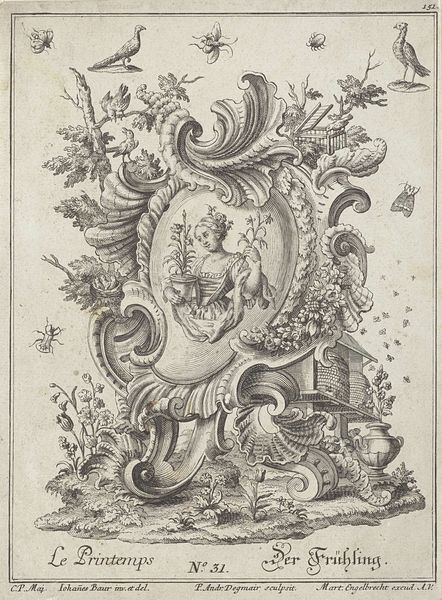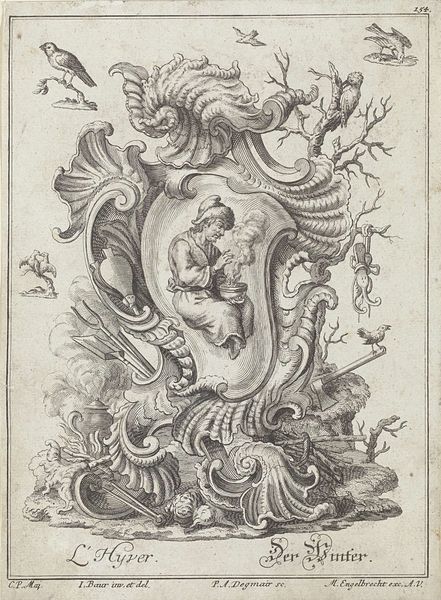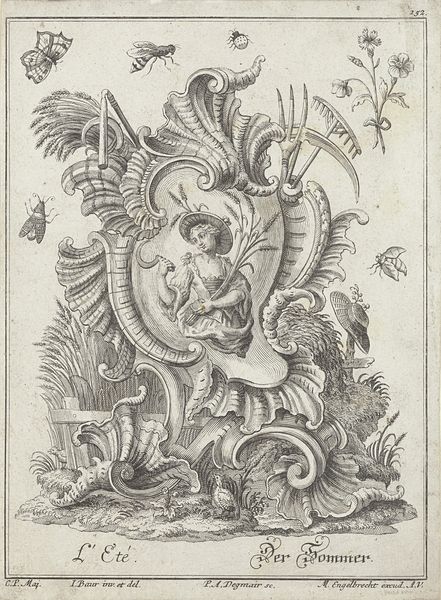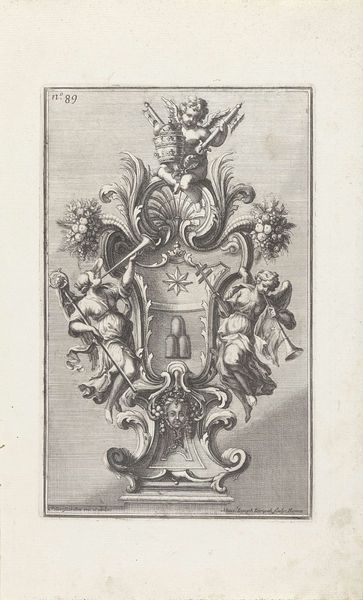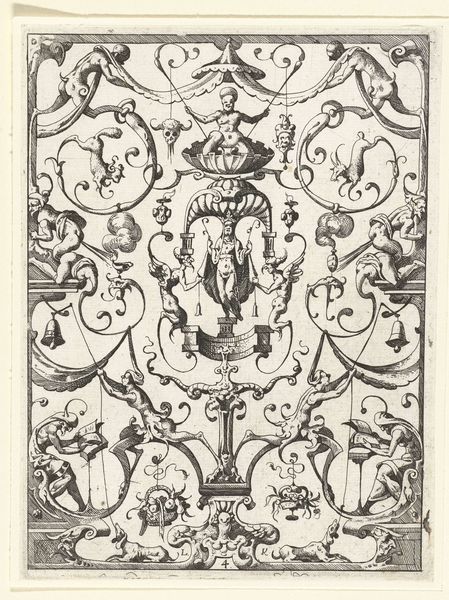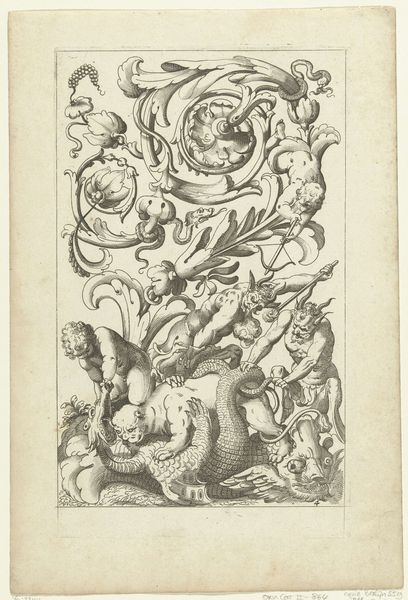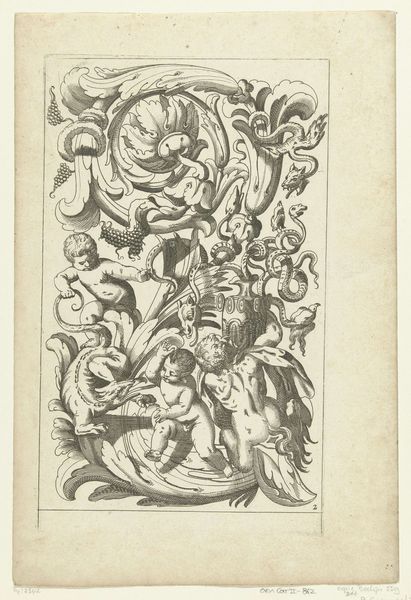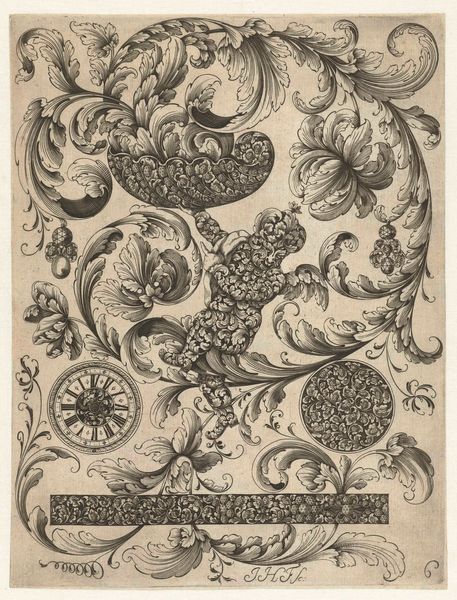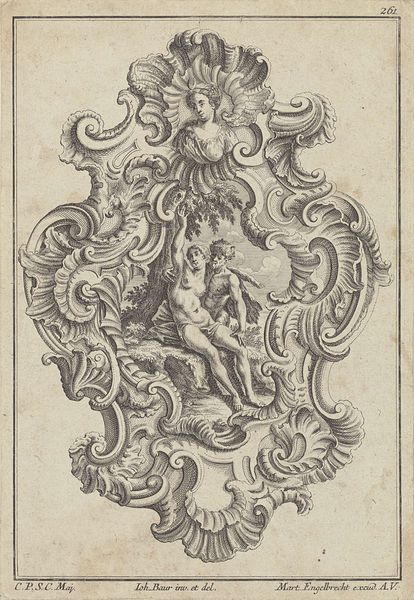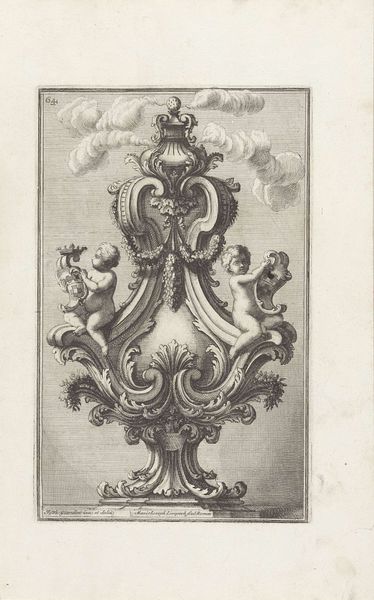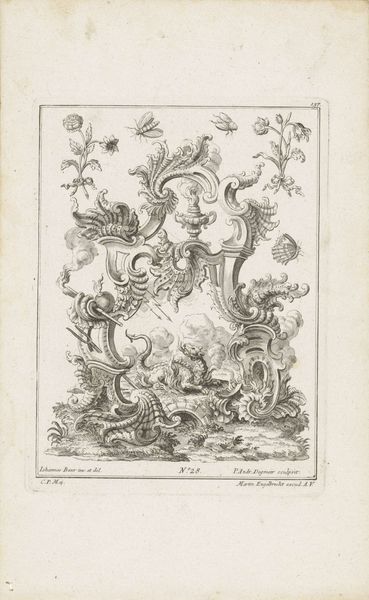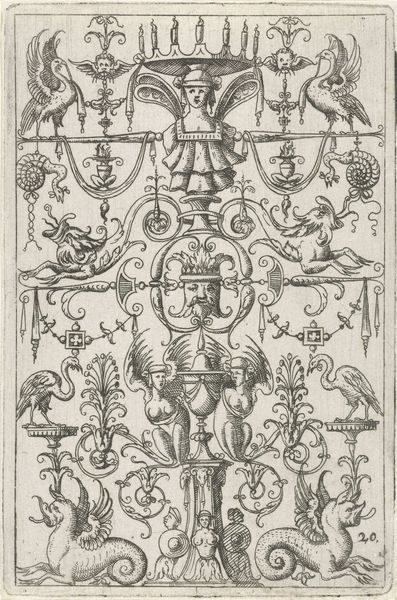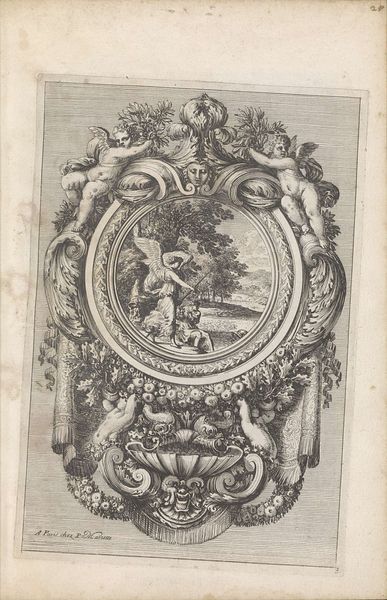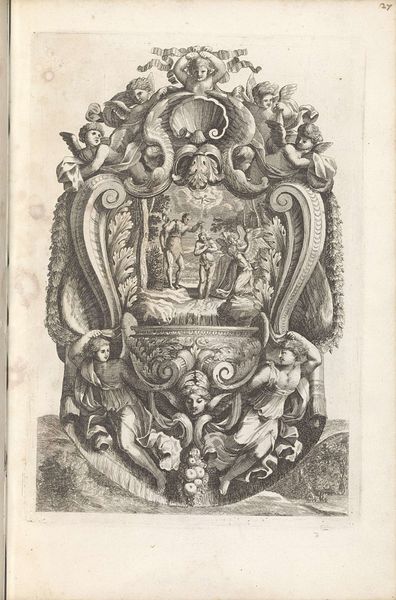
Jonge man met druiven en thyrsus op een rocaille 1719 - 1749
0:00
0:00
philippandreasdegmair
Rijksmuseum
print, engraving
#
allegory
#
baroque
# print
#
landscape
#
engraving
Dimensions: height 234 mm, width 169 mm
Copyright: Rijks Museum: Open Domain
Philipp Andreas Degmair made this print, "Young man with grapes and thyrsus on a rocaille," sometime in the 18th century. The image presents us with an idealized vision of autumn, framed within the decorative flourishes of the Rococo style. Look closely and you'll notice the visual codes at play here. The central figure, a youth crowned with grapes and bearing a thyrsus – a symbol of Dionysus, the god of wine – embodies the abundance of the harvest season. Surrounding him, we see a cornucopia of autumnal motifs, including fruits, game, and hunting implements, all rendered with meticulous detail. The print's creation coincides with the rise of the Rococo in Europe, a style characterized by its ornate decoration and celebration of aristocratic leisure. To truly understand this work, we can turn to archives and period texts, shedding light on the social and artistic conventions that shaped its creation. In doing so, we recognize that art’s meaning is always contingent on its historical context.
Comments
No comments
Be the first to comment and join the conversation on the ultimate creative platform.
